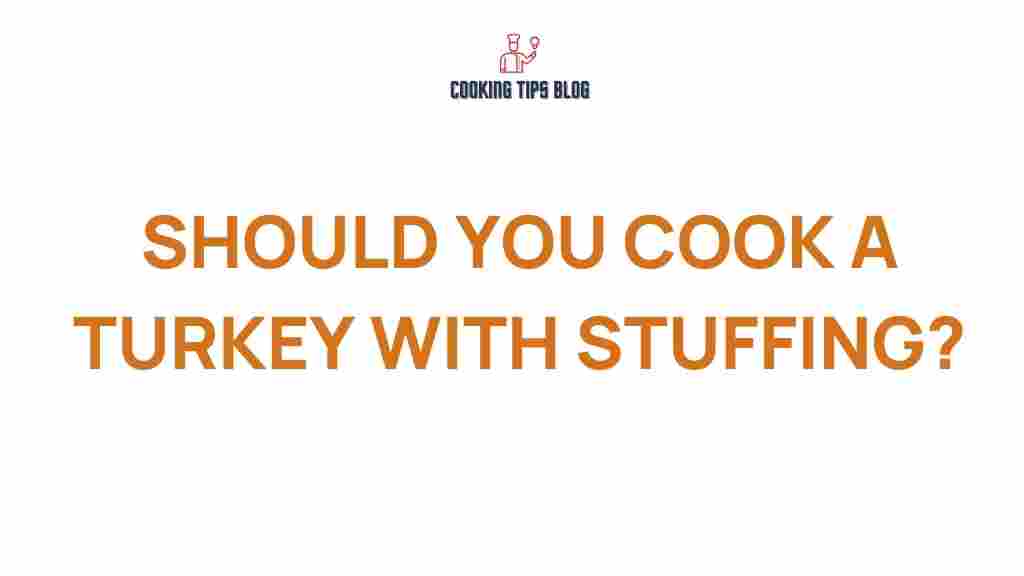Should You Cook a Turkey with Stuffing? The Truth About Turkey Cooking
When it comes to turkey cooking, the debate over whether to stuff your turkey or cook the stuffing separately is a long-standing one. As the holiday season approaches, many home cooks find themselves asking: should I cook a turkey with stuffing? This question not only affects the flavor and texture of your dish but also the safety of your meal. In this article, we will explore the pros and cons of cooking a turkey with stuffing, offer a step-by-step guide, troubleshoot common issues, and conclude with expert recommendations.
Understanding Turkey Cooking Techniques
Before diving into the stuffing debate, it’s essential to understand the basic techniques of turkey cooking. Cooking a turkey can be done in several ways, including:
- Roasting: This is the most traditional method, where the turkey is cooked in an oven at a high temperature.
- Brining: Soaking the turkey in a saltwater solution, which helps to keep it moist and flavorful.
- Frying: Deep-frying a turkey can yield a crispy skin and juicy meat, but requires special equipment.
- Smoking: Adds a unique flavor and can be a great option for outdoor cooking enthusiasts.
Each method has its advantages, but let’s focus on the classic roasting method, particularly when considering whether or not to stuff your turkey.
The Pros of Cooking a Turkey with Stuffing
There are several compelling reasons to cook a turkey with stuffing:
- Flavor: Stuffing the turkey allows the flavors of the herbs and spices used in the stuffing to permeate the meat, resulting in a more flavorful dish.
- Moisture: The stuffing can help keep the turkey moist as it cooks, absorbing juices and preventing the meat from drying out.
- Tradition: For many families, cooking a stuffed turkey is a cherished holiday tradition that brings nostalgia and warmth to the dinner table.
The Cons of Cooking a Turkey with Stuffing
While there are benefits, there are also significant drawbacks to consider:
- Food Safety: The primary concern with cooking a turkey with stuffing is ensuring that the stuffing reaches a safe internal temperature of 165°F (74°C) to avoid foodborne illnesses.
- Cooking Time: Stuffed turkeys generally take longer to cook, which can complicate meal planning.
- Texture: Some may prefer the texture of unstuffed turkey, allowing for crispy skin and a different flavor profile.
Step-by-Step Guide: How to Cook a Turkey with Stuffing
If you decide to go ahead and cook your turkey with stuffing, follow this step-by-step guide to ensure you do it safely and deliciously:
Ingredients
- 1 whole turkey (14-16 lbs)
- 4-6 cups of stuffing (store-bought or homemade)
- Salt and pepper, to taste
- Herbs and spices (thyme, rosemary, sage, etc.)
- Butter or oil for basting
Preparation Steps
- Thaw the Turkey: If using a frozen turkey, ensure it is completely thawed. This can take several days in the refrigerator, so plan accordingly.
- Prepare the Stuffing: If using homemade stuffing, prepare it just before you are ready to stuff the turkey. Avoid pre-stuffing the turkey too early to prevent bacterial growth.
- Preheat the Oven: Preheat your oven to 325°F (163°C).
- Season the Turkey: Season the inside of the turkey cavity with salt and pepper.
- Stuff the Turkey: Loosely fill the turkey cavity with stuffing, allowing for expansion during cooking. Avoid packing the stuffing too tightly.
- Truss the Turkey: Tie the legs together and tuck the wing tips under the bird for even cooking.
- Place in a Roasting Pan: Put the turkey breast-side up in a roasting pan, and brush the skin with melted butter or oil.
- Roast the Turkey: Place the turkey in the preheated oven. Roast for about 13-15 minutes per pound. Use a meat thermometer to check the internal temperature of both the turkey and the stuffing.
- Check Temperature: The turkey is done when the internal temperature reaches 165°F (74°C) in both the thickest part of the breast and the stuffing.
- Let It Rest: Once done, let the turkey rest for at least 20 minutes before carving. This allows the juices to redistribute.
Common Troubleshooting Tips
Even with careful preparation, issues can arise during turkey cooking. Here are some troubleshooting tips:
- Turkey Cooking Too Slowly: If your turkey is cooking slower than expected, check the oven temperature. An oven thermometer can help ensure accuracy.
- Stuffing Not Reaching Safe Temperature: If the stuffing is not reaching 165°F (74°C), consider removing it from the turkey and finishing it in a separate dish in the oven.
- Dry Turkey: If the turkey is dry, ensure you are basting it regularly and consider brining it next time.
- Uneven Cooking: If one side of the turkey is browning faster, rotate the pan halfway through cooking.
Conclusion: To Stuff or Not to Stuff?
In conclusion, the decision to cook a turkey with stuffing ultimately comes down to personal preference and safety considerations. Cooking a turkey with stuffing can enhance flavor and maintain moisture, but it also introduces food safety challenges that must be managed carefully. If you choose to stuff your turkey, ensure that both the turkey and stuffing reach the proper internal temperature for safe consumption.
For alternatives, consider cooking stuffing separately in a casserole dish. This method allows for crispy edges and easier temperature control. Regardless of your choice, the most important thing is to enjoy the process and create delicious memories with family and friends.
For more delicious recipes and tips on turkey cooking, check out our cooking resources. And don’t forget to share your holiday turkey experiences with us!
This article is in the category Recipes and created by Cookingtipsblog Team
